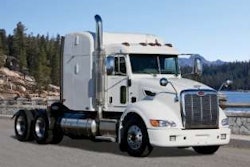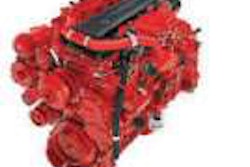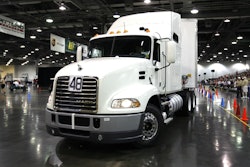Cummins has further confirmed its support for greenhouse gas and fuel-efficiency standards for heavy- and medium-duty commercial vehicles and engines during its testimony at the Environmental Protection Agency (EPA) and National Highway Traffic Safety Administration (NHTSA) public hearing in Chicago.
On Oct. 25, 2010, the EPA and the NHTSA proposed rules to establish a comprehensive Heavy-Duty National Program, which from 2014 to 2018 would reduce greenhouse gas emissions and increase fuel efficiency for on-road heavy-duty engines and vehicles. The EPA has proposed greenhouse gas emissions standards under the Clean Air Act, and the NHTSA has proposed equivalent fuel consumption standards under the Energy Independence and Security Act of 2007.
Under the Clean Air Act, heavy-duty diesel engine emissions of Nitrogen Oxides (NOx) and Particulate Matter (PM) have been reduced by 99 percent. The U.S. Department of Energy (DOE) has fostered public-private partnerships to develop the heavy-duty technologies needed to meet stringent emissions standards and improve efficiency. Additionally, the SmartWay (SM) partnership, launched by the EPA in 2004, has attracted thousands of partners focused on reducing greenhouse gas emissions and fuel consumption.
“Cummins partnership with the DOE over the past 20 years has allowed us to bring evolutionary and breakthrough engine technologies to the market faster and at a lower cost than we could have done going it alone,” said Dr. Stephen J. Charlton, chief technical officer, engine business and vice president, Cummins. “Complying with the stringent 2010 NOx limits under the EPA’s Heavy-Duty Highway Rule has put Cummins well along the path of meeting future greenhouse gas and fuel-efficiency requirements.”
Cummins says its Selective Catalytic Reduction (SCR) technology not only reduces NOx to the near-zero levels required but also enables greater fuel efficiency. As a result, Cummins 2010 Heavy-Duty and MidRange engines deliver up to 6 percent improved fuel efficiency compared with the previous models. The 2010 engines and SCR technology provide the foundation to meet the new regulations.
The EPA and NHTSA proposal establishes three regulatory categories of heavy-duty vehicles: (1) combination tractors; (2) heavy-duty pickup trucks and vans; and (3) vocational vehicles. For combination tractors and vocational vehicles, the agencies have proposed separate engine and vehicle standards.










